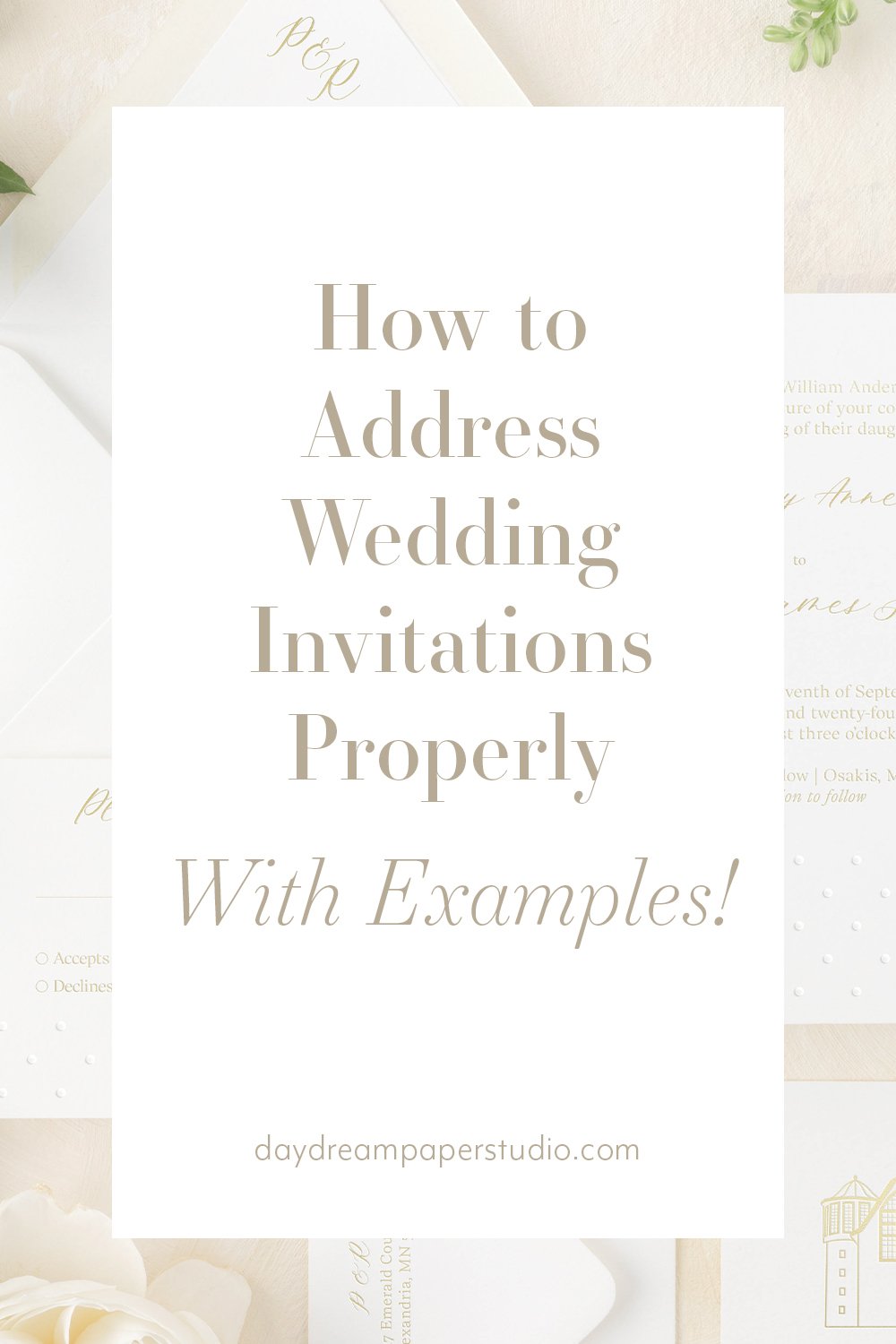Wedding Invitation Etiquette: What to Include and What to Avoid
After we toast to your engagement (cheers to that!), it’s time to start thinking about one of the most important parts of your wedding—your invitations. And while they may seem like just paper and ink, your wedding invitations set the tone for your entire celebration. They tell your guests everything they need to know about the big day while showcasing your personal style.
So, let’s break it all down: what should you include in your wedding invitations, and just as importantly, what should you leave out? With this guide, you’ll be crafting the perfect invitation with ease, charm, and just the right amount of formality.
What to Include on Your Wedding Invitations
1. Who’s Hosting?Traditionally, the invitation begins by naming the hosts of the wedding—often the parents of the bride. However, modern weddings may be hosted by both families, the couple themselves, or another combination.
Here are a few wording examples depending on your hosting situation:
Bride’s Parents Hosting:
Mr. and Mrs. John Smith
request the pleasure of your company
at the wedding of their daughter
Mary Elizabeth
to
James William Thomas
Both Families & Couple Hosting:
Together with their families
Mary Elizabeth Smith
and
James William Thomas
request the pleasure of your company
at their wedding
Bride & Groom Hosting:
Mary Elizabeth Smith
and
James William Thomas
request the pleasure of your company
at their wedding
Florence Collection
2. The Couple’s NamesThis might seem obvious, but there are some etiquette tips to keep in mind.
If the bride’s parents are hosting and she shares their last name, only include her first and middle name.
If the bride’s parents have different last names, include her full name.
The groom’s full name (first, middle, and last) should always be included, often preceded by “Mr.” in formal invitations.
Avoid abbreviations. If either of you dislikes your middle name, it’s best to omit it entirely rather than use an initial.
3. Date & TimeFormally, dates should be spelled out in full:
Saturday, the twenty-first of September
two thousand twenty-four
at half past three o’clock
If you’re hosting a more casual affair, numerals are perfectly fine:
Saturday, September 21, 2024 at 3:30 PM
4. LocationYour invitation should include:
The venue name
The city and state
The street address (optional, unless needed for clarity)
Including a full address is helpful for private residences, venues with similar names in the same area, or for destination weddings.
5. Reception DetailsIf your reception is at the same venue, a simple “Reception to follow” will suffice. For separate locations or significant time gaps between events, include a reception card in your suite.
6. Attire (Optional) While not required, attire suggestions can be helpful for guests. If included, they should be placed in the bottom right corner:
Black Tie
Semi-Formal Attire
For more specific instructions (e.g., “Wear comfortable shoes for our garden ceremony”), include this information on a separate details card or your wedding website.
Florence Collection
What NOT to Include on Your Wedding Invitations
1. “Adults-Only” or “No Kids”Hosting a child-free wedding? That’s totally fine! But avoid directly stating “No Kids” on your invitation. Instead:
Address envelopes to parents only.
Mention it subtly on your wedding website.
Use an RSVP card line: “We have reserved __ seat(s) in your honor.”
There’s also a blog post here on how to navigate this tricky topic.
2. Registry DetailsWhile it’s natural to want to make gift-giving easier for your guests, registry details should never be included in your wedding invitation. Instead:
List your registry on your wedding website.
Rely on word-of-mouth through close family and friends.
3. Too Many Extra DetailsKeep your main invitation elegant and to the point. Additional information—like weather, local attractions, or a list of nearby restaurants—is better suited for your wedding website or a details card.
4. Directions or a MapUnless your venue is difficult to find, it’s best to leave maps and directions off the invitation. If necessary, include a separate directions card.
5. Wedding Website URLWhile your wedding website is a great resource for guests, it doesn’t belong on the main invitation. Instead, include a small insert directing guests to your website.
Additional Stationery to Consider
Accommodations CardIf you’ve reserved a hotel block, an accommodations card provides guests with booking details.
Reception CardFor weddings where the ceremony and reception are in different locations, a reception card ensures clarity.
Details CardA great place to include transportation information, parking, or any additional guest instructions.
RSVP CardYour RSVP card should include:
A response deadline
Meal selection (if applicable)
The guest’s name(s)
Space for dietary restrictions or song requests (optional)
Florence Collection
Final Thoughts
Your wedding invitations are the first glimpse of your big day, setting the tone for your guests. By following these etiquette guidelines, you’ll create invitations that are both timeless and informative—without unnecessary clutter.
Still feeling overwhelmed? We’re here to help! Browse our collection of elegant wedding stationery, or contact us to create a custom design that reflects your vision perfectly.
Love what you’re reading? Get our free guide, Wedding Invitations, Simplified. Your thoughtfully designed roadmap to what you need, when to order, and how to make your stationery unforgettable.










